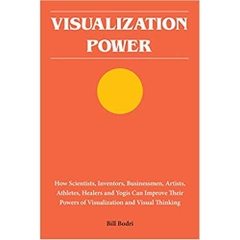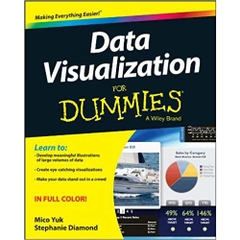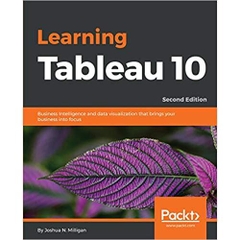-
-
-
Tổng tiền thanh toán:
-
-
Thông tin
-
Tìm sách theo yêu cầu
Practical data design tips from a data visualization expert of the modern age
From the Author: Telling Stories with Data

Author Nathan Yau
A common mistake in data design is to approach a project with a visual layout before looking at your data. This leads to graphics that lack context and provide little value. Visualize This teaches you a data-first approach. Explore what your data has to say first, and you can design graphics that mean something.
Visualization and data design all come easier with practice, and you can advance your skills with every new dataset and project. To begin though, you need a proper foundation and know what tools are available to you (but not let them bog you down). I wrote Visualize This with that in mind.
You'll be exposed to a variety of software and code and jump right into real-world datasets so that you can learn visualization by doing, and most importantly be able to apply what you learn to your own data.
Three Data Visualization Steps:
1) Ask a Question

When you get a dataset, it sometimes is a challenge figuring out where to start, especially when it's a large dataset. Approach your data with a simple curiosity or a question that you want answered, and go from there.
2) Explore Your Data

A simple curiosity often leads to more questions, which are a good guide for what stories to dig into. What variables are related to each other? Can you see changes over time? Are there any features in the data that stand out? Find out all you can about your data, because the more you know what's behind the numbers, the better story you can tell.
3) Visualize Your Data

Once you know the important parts of your data, you can design graphics the best way you see fit. Use shapes, colors, and sizes that make sense and help tell your story clearly to readers. While the base of your charts and graphs will share many of the same properties – bars, slices, dots, and lines – the final design elements will and should vary by your unique dataset.
Data doesn?t decrease; it is ever-increasing and can be overwhelming to organize in a way that makes sense to its intended audience. Wouldn?t it be wonderful if we could actually visualize data in such a way that we could maximize its potential and tell a story in a clear, concise manner? Thanks to the creative genius of Nathan Yau, we can. With this full-color book, data visualization guru and author Nathan Yau uses step-by-step tutorials to show you how to visualize and tell stories with data. He explains how to gather, parse, and format data and then design high quality graphics that help you explore and present patterns, outliers, and relationships.
- Presents a unique approach to visualizing and telling stories with data, from a data visualization expert and the creator of flowingdata.com, Nathan Yau
- Offers step-by-step tutorials and practical design tips for creating statistical graphics, geographical maps, and information design to find meaning in the numbers
- Details tools that can be used to visualize data-native graphics for the Web, such as ActionScript, Flash libraries, PHP, and JavaScript and tools to design graphics for print, such as R and Illustrator
- Contains numerous examples and descriptions of patterns and outliers and explains how to show them
Visualize This demonstrates how to explain data visually so that you can present your information in a way that is easy to understand and appealing.
From the Author: Telling Stories with Data

Author Nathan Yau
A common mistake in data design is to approach a project with a visual layout before looking at your data. This leads to graphics that lack context and provide little value. Visualize This teaches you a data-first approach. Explore what your data has to say first, and you can design graphics that mean something.
Visualization and data design all come easier with practice, and you can advance your skills with every new dataset and project. To begin though, you need a proper foundation and know what tools are available to you (but not let them bog you down). I wrote Visualize This with that in mind.
You'll be exposed to a variety of software and code and jump right into real-world datasets so that you can learn visualization by doing, and most importantly be able to apply what you learn to your own data.
Three Data Visualization Steps:
1) Ask a Question

When you get a dataset, it sometimes is a challenge figuring out where to start, especially when it's a large dataset. Approach your data with a simple curiosity or a question that you want answered, and go from there.
2) Explore Your Data

A simple curiosity often leads to more questions, which are a good guide for what stories to dig into. What variables are related to each other? Can you see changes over time? Are there any features in the data that stand out? Find out all you can about your data, because the more you know what's behind the numbers, the better story you can tell.
3) Visualize Your Data

Once you know the important parts of your data, you can design graphics the best way you see fit. Use shapes, colors, and sizes that make sense and help tell your story clearly to readers. While the base of your charts and graphs will share many of the same properties – bars, slices, dots, and lines – the final design elements will and should vary by your unique dataset.
Product Details
- Paperback: 384 pages
- Publisher: Wiley; 1 edition (July 20, 2011)
- Language: English
- ISBN-10: 0470944889
- ISBN-13: 978-0470944882
- Product Dimensions: 9.1 x 7.4 x 0.8 inches
- Shipping Weight: 1.9 pounds (View shipping rates and policies)
- Average Customer Review: 4.2 out of 5 stars See all reviews (56 customer reviews)
- Amazon Best Sellers Rank: #19,323 in Books (See Top 100 in Books)
Editorial Reviews
From the Back Cover
See your data in new ways
Our world is awash in data. To mean anything, it must be presented in a way that enables us to interpret, analyze, and apply the information. One of the best ways to do that is visually.
Nathan Yau is a pioneer of this innovative approach. In this book, he offers you dozens of ideas for telling your story with data presented in creative, visual ways. Open the book, open your mind, and discover an almost endless variety of ways to give your data new dimensions.
Learn to present data with visual representations that allow your audience to see the unexpected
Find the stories your data can tell
Explore different data sources and determine effective formats for presentation
Experiment with and compare different visualization tools
Look for trends and patterns in your data and select appropriate ways to chart them
Establish clear goals to guide your visualizations
Visit the companion web site at www.wiley.com/go/visualizethis for code samples, data files you can download, and interactive examples to show you how visualization works
About the Author
Nathan Yau is a PhD candidate in Statistics at UCLA and a lifelong data junkie. His goal is to make data available and useful to those who aren't necessarily data experts, and he focuses on data visualization and personal data collection. You can follow his visualization experiments at http://flowingdata.com.
By Bill Ferster on July 20, 2011
Format: Paperback Verified Purchase
3 Comments Was this review helpful to you? YesNoThis is a nice addition to the books on data visualization. It will be particulary useful for people wanting to learn R (the lingua franca of statisticians) to create good looking visualizations. The writing style is crisp and conversational and is organized around the kind of things one might want the data to communicate: time series, part-to-whole comparisons, relationships, etc. It does not require any expertise in programming or statistics to understand.
13 of 14 people found the following review helpfulBy I Teach Typing on September 24, 2011
Format: Paperback Verified Purchase
I have been teaching data management and visualization for 12 years and I have never seen a book that covers visualization so well for such a broad audience. It braids together the very best tools of the trade for scientific data visualization, graphic design concepts and "how-to" advice. It gives a friendly introduction to tools like R, Illustrator, XML, Python (with BeautifulSoup), JSON, etc. (and the toolkit goes on-and-on). Also it gives complete working code examples to show how to scrape data from the web for analysis and visualize the info without swamping the reader with details. It has a HUGE set of references and free tools for getting interesting data-sets (everything from sports to science to politics to health), reformatting data and making graphics that are ready for mass media or scientific publication.
There is very little to complain about here except the fact that the author shows off Illustrator instead of its less expensive competitors. I had avoided Illustrator because of cost and the nasty learning curve but now, thanks to this book, I am using it to edit my SAS and R graphics that were "almost perfect." Happily this book has great examples for showing how to manipulate/clean up scientific graphics without getting bogged down in the endless complexity that is Illustrator.
So, this is all around beautiful, friendly and worth every cent if you need to make high quality graphics.
There is very little to complain about here except the fact that the author shows off Illustrator instead of its less expensive competitors. I had avoided Illustrator because of cost and the nasty learning curve but now, thanks to this book, I am using it to edit my SAS and R graphics that were "almost perfect." Happily this book has great examples for showing how to manipulate/clean up scientific graphics without getting bogged down in the endless complexity that is Illustrator.
So, this is all around beautiful, friendly and worth every cent if you need to make high quality graphics.
Xem thêm tại amazon.com
- Thông tin chi tiết
- Mục lục
- Đọc thử
- Đọc thử
- Đánh giá & bình luận của người mua
- Những cuốn sách cùng chủ đề hoặc có liên quan
Link: http://www.amazon.com/Visualize-This-FlowingData-Visualization-Statistics/dp/0470944889/
Tại web chỉ có một phần nhỏ các đầu sách đang có nên nếu cần tìm sách gì các bạn có thể liên hệ trực tiếp với Thư viện qua Mail, Zalo, Fanpage nhé
Đăng ký nhận tin qua email
Hãy đăng ký ngay hôm nay để nhận được những tin tức cập nhật mới nhất về sản phẩm và các chương trình giảm giá, khuyến mại của chúng tôi.












